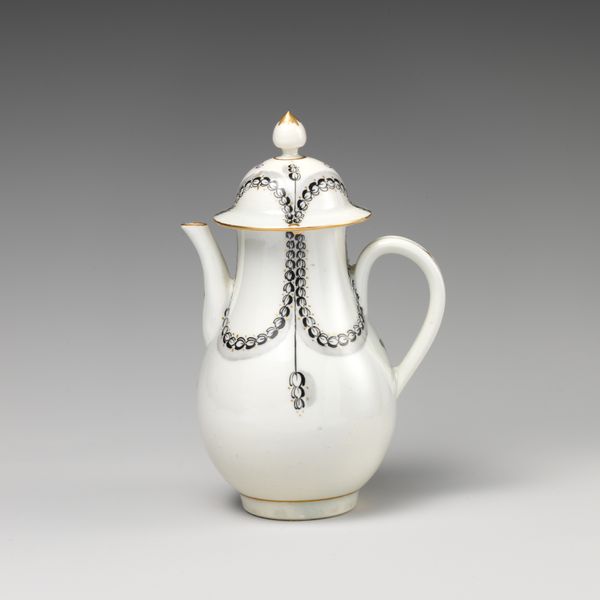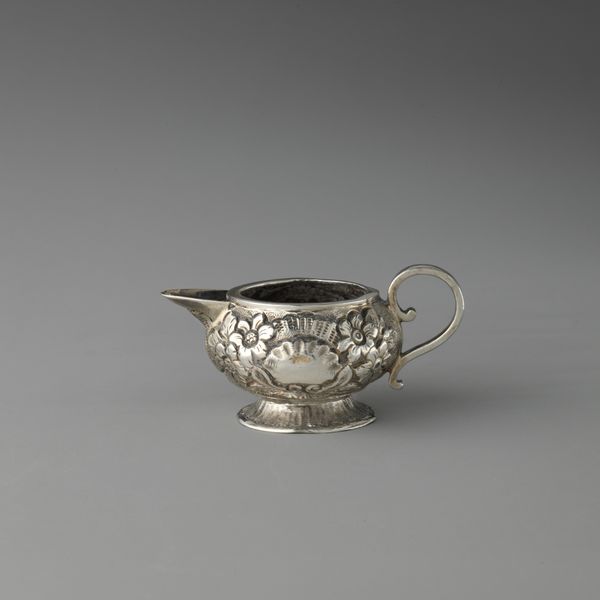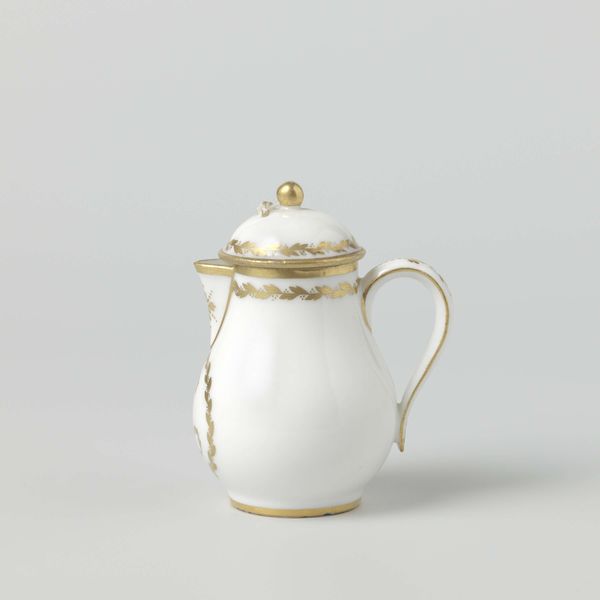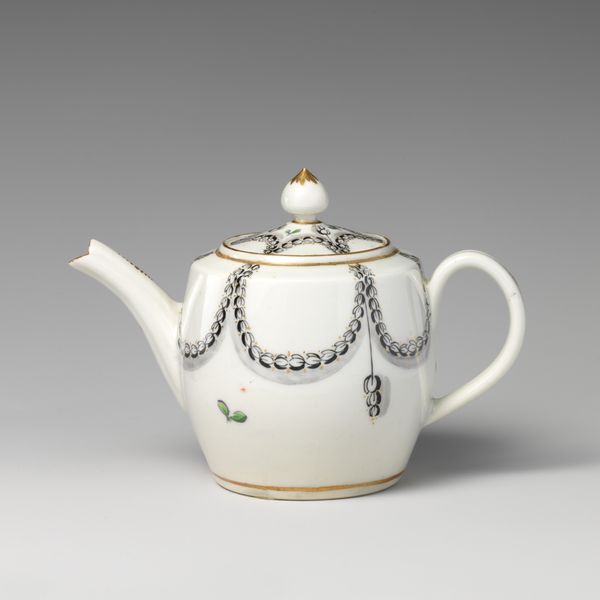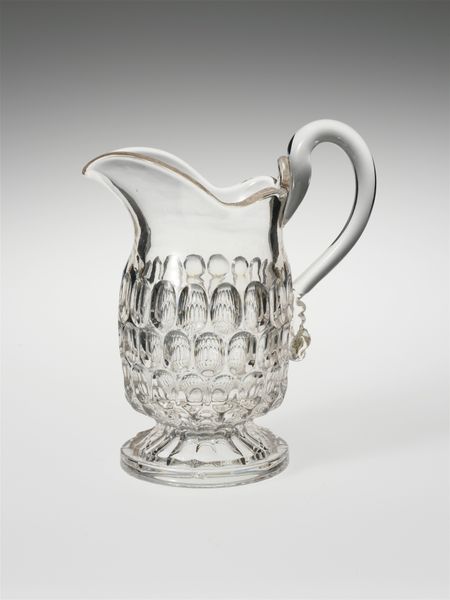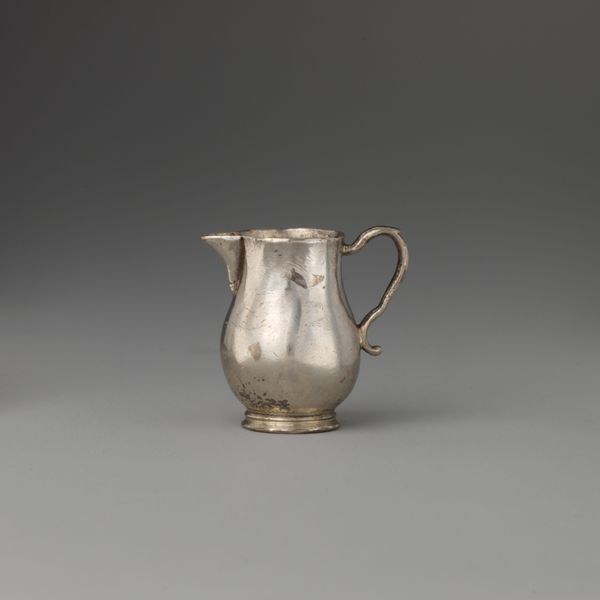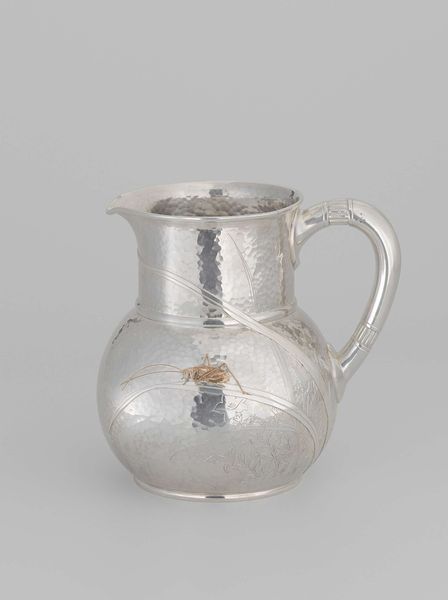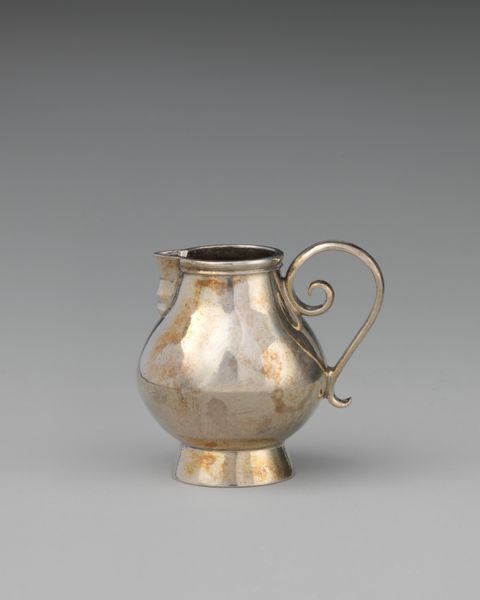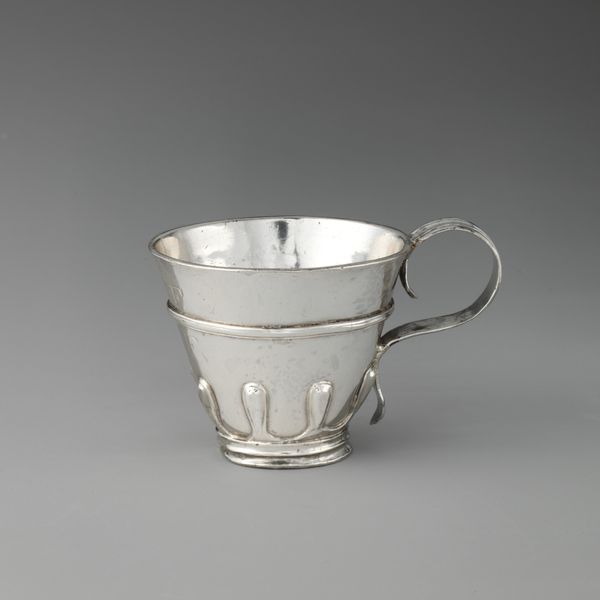
Dimensions: Height: 2 7/16 in. (6.2 cm)
Copyright: Public Domain
Editor: We’re looking at a porcelain cream pitcher, dating from around 1775 to 1795, created by the Caughley Factory. It’s currently housed at the Metropolitan Museum of Art. It has this delicate, almost understated elegance. What catches your eye about its composition? Curator: Immediately, it's the formal qualities asserting themselves. Note how the pristine white surface accentuates the black en grisaille—a calculated choice in contrasting tonality, compelling visual interest by strategically deploying ornament to underscore form. It teases at Rococo frivolity even as the limited palette speaks of Neoclassical restraint. Does it strike you how that gilded rim subtly defines, contains, and refines the composition? Editor: Yes, it's like a restrained frame. But, is that decoration just surface embellishment, or is there a deeper visual purpose? Curator: Functionally, one could say its purpose is mere surface decoration. Yet, visually the repeated drape of linked circles gives an ordered rhythm and counterpoint to the ovoid mass of the vessel itself. One begins to decode it through a type of formalism: the structure dictates a semantic dialogue—surface communicating intention with restraint. Can we agree on that? Editor: Absolutely. So, the interplay of form and decoration isn’t just pretty; it's fundamental to understanding its artistic language. Curator: Precisely! Seeing thusly, how do you interpret the relationship between functionality and artistry in an object of such measured beauty? Editor: I now recognize how it's carefully crafted and restrained. A beautiful exercise in contrasts and disciplined design. Thank you. Curator: It is such attentiveness to details, the careful balancing act between form and decoration that elevates a mere useful item into an objet d’art worthy of contemplation.
Comments
No comments
Be the first to comment and join the conversation on the ultimate creative platform.
